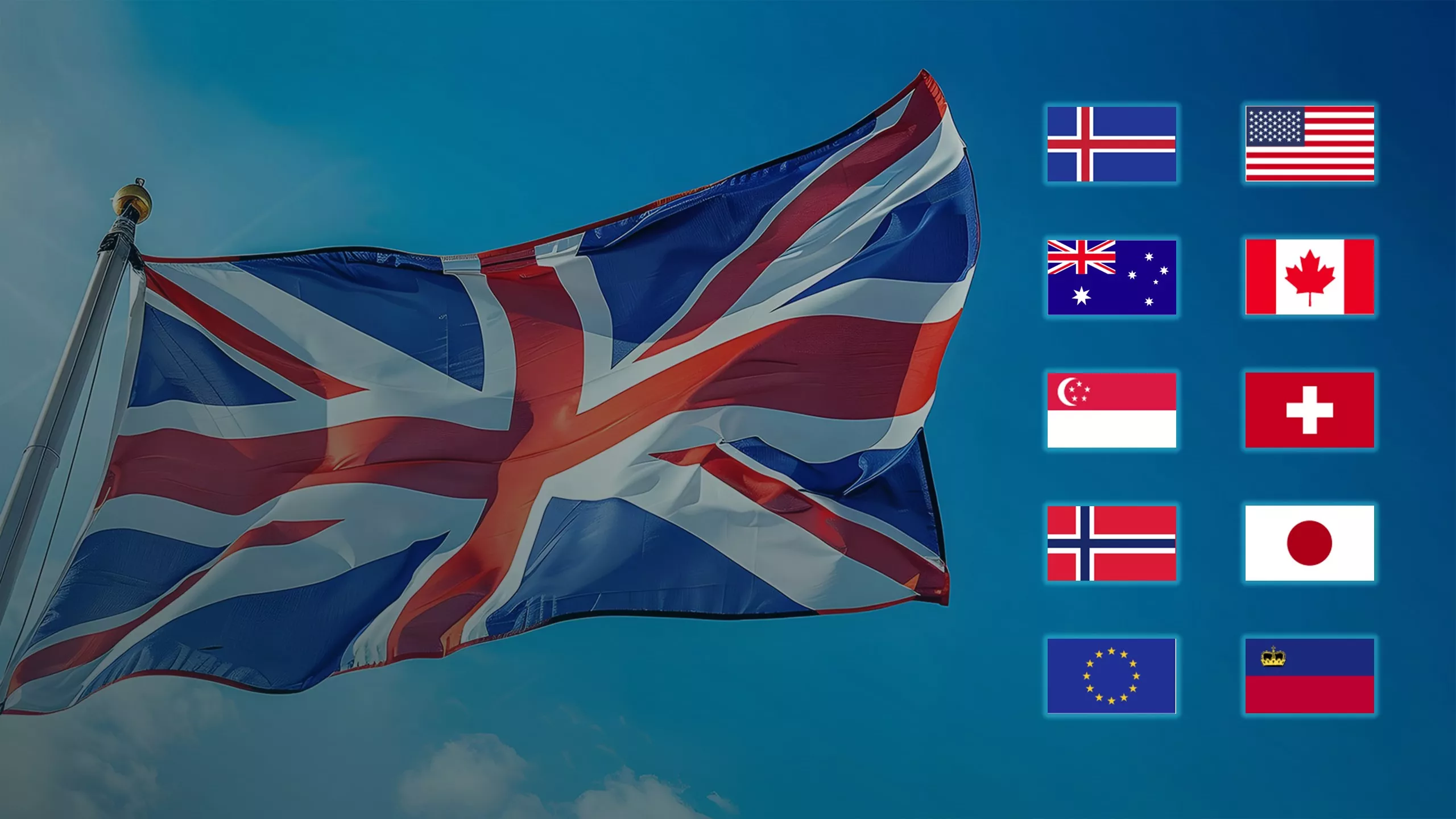
International Recognition Procedure (IRP)
07 january 2025

Overview
International Recognition Procedure (IRP), effective from 01 January 2024, is available to applicants who have already received authorization for the same product from one of MHRA’s reference regulators (RRs)
The ‘same product’ is defined as having the same qualitative and quantitative composition (active substance(s) and excipients), and the same pharmaceutical form, from applicants belonging to the same company or group of companies, or which are ‘licensees’.
Reference regulators (RRs)
Reference regulators include Australia (Therapeutic Goods Administration, TGA), Canada (Health Canada), Switzerland (SwissMedic), Singapore (Health Science Authority Singapore, HSA), Japan (Pharmaceuticals and Medical Devices Agency, PMDA), United States (Food and Drug Administration, FDA), European Union/European Economic Area (European Medicines Agency (EMA) and Member State Competent Authorities of the EU, Norway, Iceland and Lichtenstein. (This includes approvals through the centralized MRP/DCP and individual member state national routes)
Benefits of International Recognition Procedure
- Efficiency- The IRP reduces the burden on global companies for filing initial marketing authorization applications by streamlining document submission to RR approval
- Cost-effectiveness- Opting for IRP can reduce inventory costs for research, quality analysis, submission, labor, etc., at companies
- Integrated approval- IPR enables MHRA to collaborate with trusted regulated partners for the benefit of UK patients, involving multiple reference regulators to advance applications.
- Blended approach- IPR accelerates the authorization of drugs approved under RR’s market in Britain, benefiting healthcare professionals and patients
- Time-saving- IRP offers a faster approval timeline compared to UK national procedures.
IRP allows the MHRA to leverage the expertise and decision-making of trusted regulatory partners to benefit UK patients. While MHRA will conduct a targeted assessment of IRP applications, it retains the authority to reject applications if the evidence provided is deemed insufficiently robust.
Legal basis
IRP considers the marketing authorisation applications (MAAs) submitted via the following regulations:
- Regulation 50 (chemical and biological new active substances and known active substances),
- Regulation 51, 51A and 51B (generic applications),
- Regulation 52, 52A and 52B (hybrid applications),
- Regulation 53, 53A and 53B (biosimilar applications) and
- Regulation 55 (fixed combination product applications)
Traditional herbal registrations, homeopathic registrations (Simplified Registration Scheme), and homeopathic national rules authorizations (National Rules Scheme) are excluded. Bibliographic applications (Regulation 54 of the Human Medicines Regulations) are also not eligible.
Criteria
An important criterion of registration via IPR is that the RR assessment must have undergone a full and standalone review. RR assessments based on reliance or recognition cannot support IPR.
Conditional and exceptional circumstances MAAs (or international equivalents such as provisional or accelerated approval) can support an IRP application. Emergency approvals, however, are not eligible. Cancelled authorization can’t be used to support the IRP application.
Timelines
IRP can be filed via Recognition A (follows 60 -a day timetable) and Recognition B (follows 110 -a day timetable)
The timetables are based on calendar days and start once MHRA has validated the IRP submission.
Suitability for Recognition A or B is determined through an online eligibility form, which the applicant must complete six weeks before the planned MAA submission.
Recognition A
RR approval granted within the previous 2 years is eligible for Recognition A. A CHMP positive opinion or MRDC end-of-procedure outcome/equivalent (for non-EU RRs) is considered an RR approval for the purposes of IRP.
Recognition B
RR approval granted within the previous 10 years is eligible for Recognition B. A CHMP positive opinion or MRDC end-of-procedure outcome/equivalent (for non-EU RRs) is considered an RR approval for the purposes of IRP.
The criteria for Recognition A and Recognition B are detailed on the MHRA website.
IRP for life-cycle management
IRP can be used for life-cycle management activities, including line extensions, variations (Type IB, Type II), and renewal applications (including annual renewal of conditional MAs and annual reassessment of exceptional circumstance MAs). Type IA variations can also be submitted if they are part of a group with Type IB or Type II variations.
IRP can be used during the lifecycle of products that have been initially authorized or subsequently varied via standalone national, MRDCRP, or ECDRP routes. Conversely, it is acceptable to submit standalone national post-authorization procedures for products authorized via IRP, including variations.
Unless justified, it is generally recommended that the same RR is used for IPR applications throughout the product’s lifecycle.
The relevant published MHRA timetables for national post-authorization procedures will apply to IRP. The classification of Recognition routes A and B is only applicable for new IRP MAAs and line extension applications. The eligibility form is not relevant for variations and renewals.
IRP is not a substitute for the Marketing Authorization Holder’s (MAH) obligations to submit pharmacovigilance data and information to MHRA and keep the MA up to date with current scientific knowledge.
New IRP marketing authorization applications and life-cycle management
The IRP application can be submitted to MHRA through the MHRA Submissions Portal as an electronic Common Technical Document (eCTD) sequence. The eCTD should be in EU format with a UK-specific module 1.
The eCTD submission should align with the consolidated dossier reviewed by the RR, including the applicant’s full responses to RR questions. Once approved by the RR, approved post-authorisation changes, including variations, should be included in the MHRA MAA submission.
For new IRP MAAs, the submission should include the RR’s approval decision, all available iterations of the RR’s assessment report for the initial authorisation and any major post-authorisation procedures (for example, significant variations, renewals), the final product information (or international equivalent) approved by the RR, and a list of differences (other than formatting) between the dossier approved by the RR and that submitted to MHRA.
In a similar way, relevant documents are to be submitted for post-authorisation applications.
Conclusion
The implementation of an IRP marks a significant step in global regulatory collaboration. With the approval and documentation from reference regulators, drugs approved by reference regulators can swiftly enter the UK market through IRP, fostering advancements in science, market dynamics, and the well-being of patients, companies, and healthcare professionals.
A milestone has been achieved by replacing the ECDRP in the UK and embracing the IRP. This streamlined approval process and global collaboration epitomize efficient marketing authorization for initial drug applications and life-cycle management. It represents a guaranteed method of harmonizing various global regulatory standards under a single, unique procedure, ensuring a more seamless and standardized approach to drug approval across borders.
At Productlife-Group, we specialize in providing expert services to support clients with IRP submissions for initial marketing authorisations and life-cycle management. Our team of experts, located across different geographies, ensures that our clients stay ahead of the curve in the rapidly changing regulatory landscape.
References
- Guidance On International Recognition Procedure. Medicines & Healthcare products Regulatory Agency. Updated August 29, 2024. Accessed Nov 11, 2024.
- Mallikaarjunan R, MBA,Senthamilselvi Pachamuthu,Bhuvaneswari Sivaraman, MPharm,Ravi Sharma, MPharm, RAC, RAPS. Insights on the UK’s MHRA International Recognition Procedure. Pharmacy Times. July 4, 2024. Accessed Nov 11, 2024
https://www.pharmacytimes.com/view/insights-on-mhra-s-international-recognition-procedure
Register to our news and events
Go to our Events to register
Go to our News to get insights
